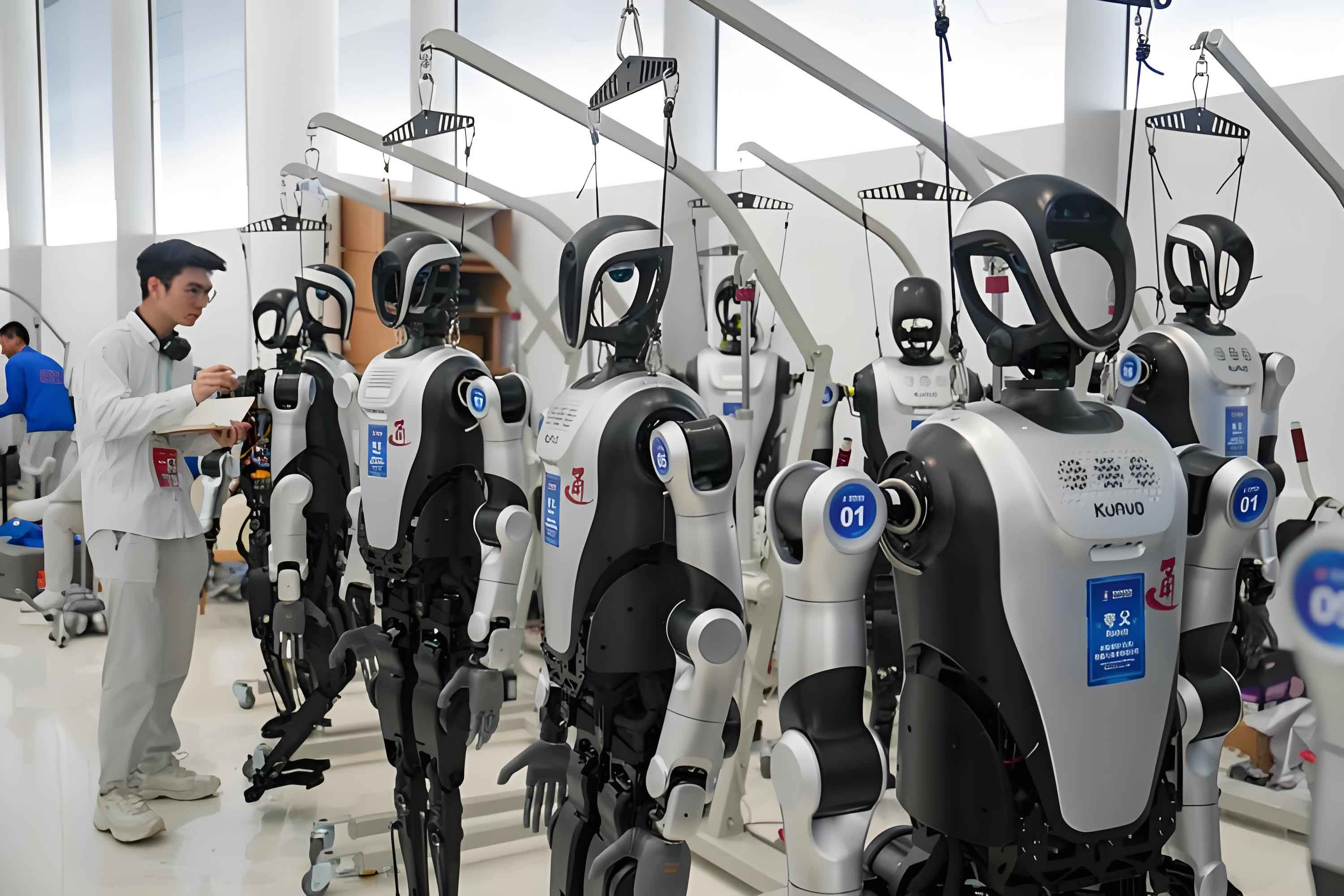Humanoid robots face significant challenges in securing viable application scenarios despite rapid technological advancements. Cities across China are addressing this gap through innovative testing methods like specialized competitions while formulating ambitious industrial blueprints to dominate this emerging sector.
1. Challenges and Testing Through Competitions
Application scarcity remains the primary barrier for humanoid robot deployment. To evaluate performance in complex environments, multiple cities have organized competitive events simulating real-world conditions:
- Beijing hosted the world’s first humanoid robot half-marathon on April 19 in its Economic-Technological Development Area, testing endurance and navigation capabilities.
- Wuxi inaugurated the Embodied Intelligence Robot Games from April 24-26, featuring multi-disciplinary challenges.
- The World Humanoid Robot Games scheduled for August 15-17, 2025 in Beijing will include athletic, industrial, and interactive events.
These initiatives aim to accelerate the transition of humanoid robots from laboratories to practical settings. Industrial and commercial scenarios are prioritized in initial deployments, though household applications require longer development cycles. Continuous optimization remains essential to bridge the gap between current capabilities and real-world demands.
2. Urban Ambitions and Goals for Humanoid Robots
Following China’s 2023 “Guidance on Innovative Development of Humanoid Robots,” local governments have launched aggressive strategies targeting industrial leadership by 2027:
- Shenzhen: Targets 100+ enterprises valued over $1.4 billion and 50+ application scenarios exceeding $140 million by 2027, aiming for $14 billion in related industries.
- Beijing: Plans to cultivate 50+ core companies, launch 50+ mass-produced models, and deploy 10,000+ humanoid robots across education, industry, and service sectors by 2027.
- Shanghai: Establishing the National Humanoid Robot Manufacturing Innovation Center while expanding its comprehensive supply chain from components to end-user applications.
- Suzhou: Focuses on integrating humanoid robots with advanced manufacturing, targeting $1.4 billion core industry scale and $28 billion total robotics market by 2027.
- Wuxi: Aims to develop 300+ application scenarios in manufacturing and public services while growing its AI industry to $42 billion within three years.
- Ningbo: Strives to become a top-tier production and R&D hub with 25+ application scenarios and provincial-level industrial zone status by 2027.
3. Boosting Production Capacity
Manufacturing infrastructure for humanoid robots is scaling rapidly across key cities:
- Shanghai-based companies like Fourier, CETC 21st Institute, and Kepler have released multiple humanoid robot prototypes. Agibot has delivered five humanoid robot models.
- Jiangsu Province’s first dedicated humanoid robot production line launched by Leju Robotics in Suzhou in December 2024 is currently ramping up output.
This manufacturing expansion reflects the sector’s critical transition toward commercialization. However, industry analysts emphasize that sustained progress requires scenario-specific refinements rather than isolated technological advances.

4. Accelerating Exploration of Application Scenarios
Competitions are evolving to test broader operational capabilities. The 2025 World Humanoid Robot Games in Beijing will feature:
- Core Competitions: Athletics, football, material handling, and pharmaceutical sorting.
- Interactive Events: Badminton, chess, and culinary demonstrations like robotic coffee brewing.
Industry collaborations are concurrently expanding real-world deployments:
- Huawei and Ubtech signed a comprehensive agreement on May 12 to advance industrial and household humanoid robot applications.
- Transfar Group and Zhejiang Humanoid Robot Innovation Center established a joint materials laboratory on May 8 to enhance robotic hardware.
- National Humanoid Robot Innovation Center partnered with sanitation firm Chaoyin on May 7 to deploy humanoid robots in waste management and property services.
Industrial applications show particular momentum. Dongfeng Liuzhou Motors ordered 20 Ubtech humanoid robots for automotive factories in March 2025—the first bulk industrial procurement. These units perform quality inspections, parts installation, and logistics tasks. Ubtech’s 2024 annual report confirms their Walker S series successfully handled repetitive industrial operations including component sorting and precision assembly.
5. The Long Road Ahead
While humanoid robots represent a trillion-dollar market opportunity, persistent challenges include:
- Technical Refinements: Achieving reliable generalization across dynamic environments.
- Scalability: Transitioning from controlled demonstrations to mass deployment.
- Cost Efficiency: Reducing production expenses for widespread adoption.
Current commercial applications remain concentrated in exhibitions, hospitality, and education where task complexity is manageable. Industrial settings offer the most immediate potential for humanoid robots to accumulate operational data and refine algorithms. As cities continue their technological marathon, the focus must remain on practical problem-solving rather than speculative ambition to realize humanoid robots’ full economic potential.
